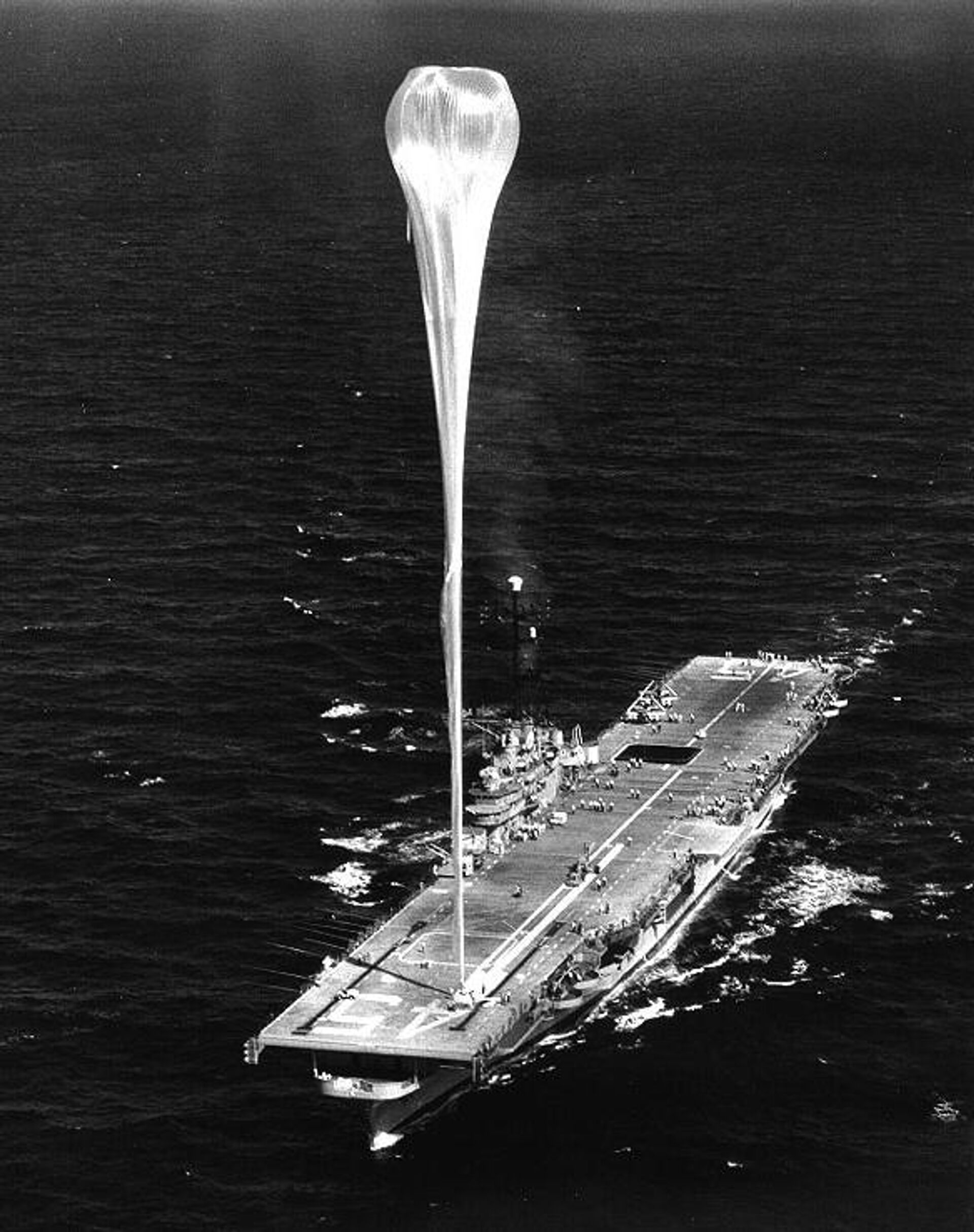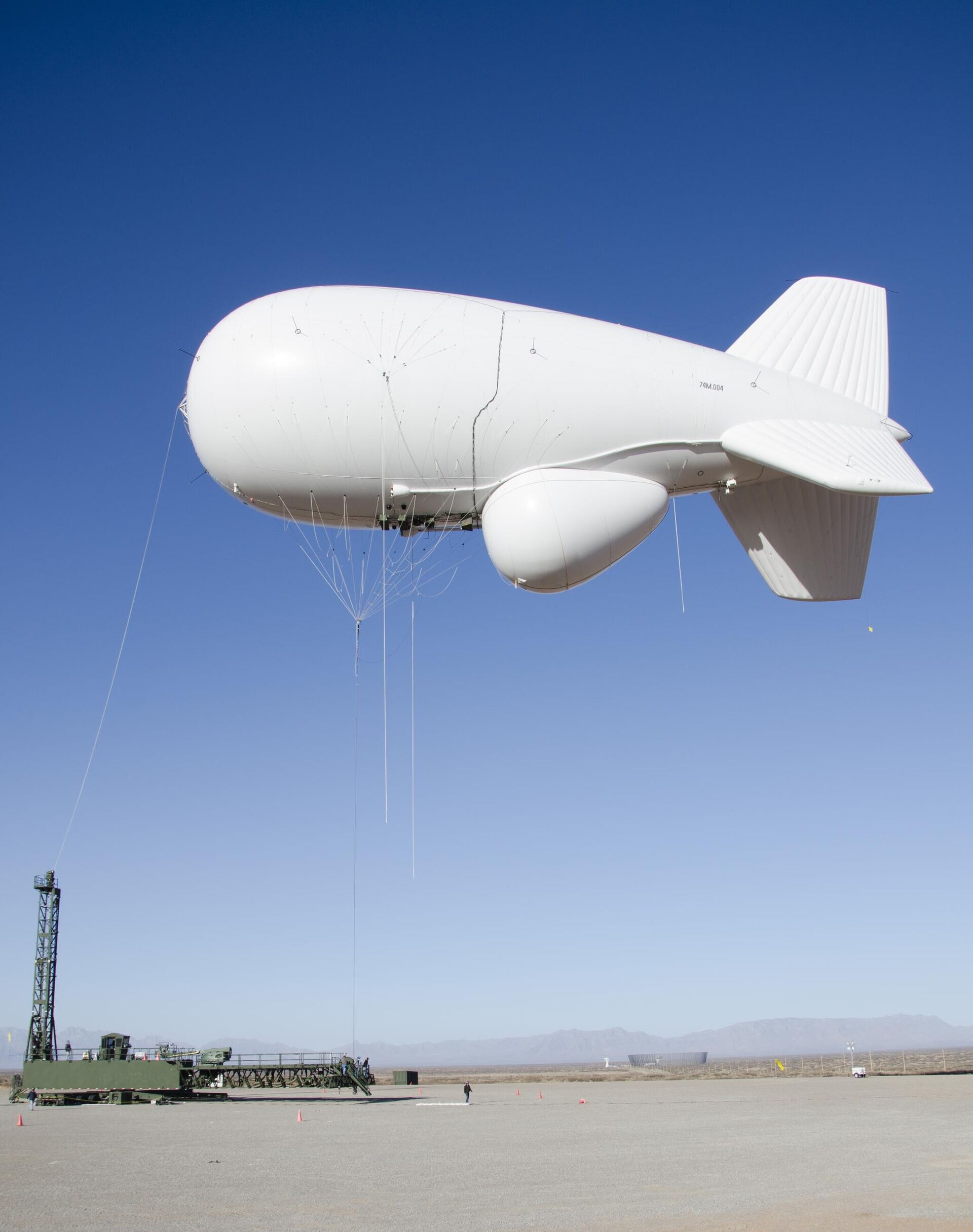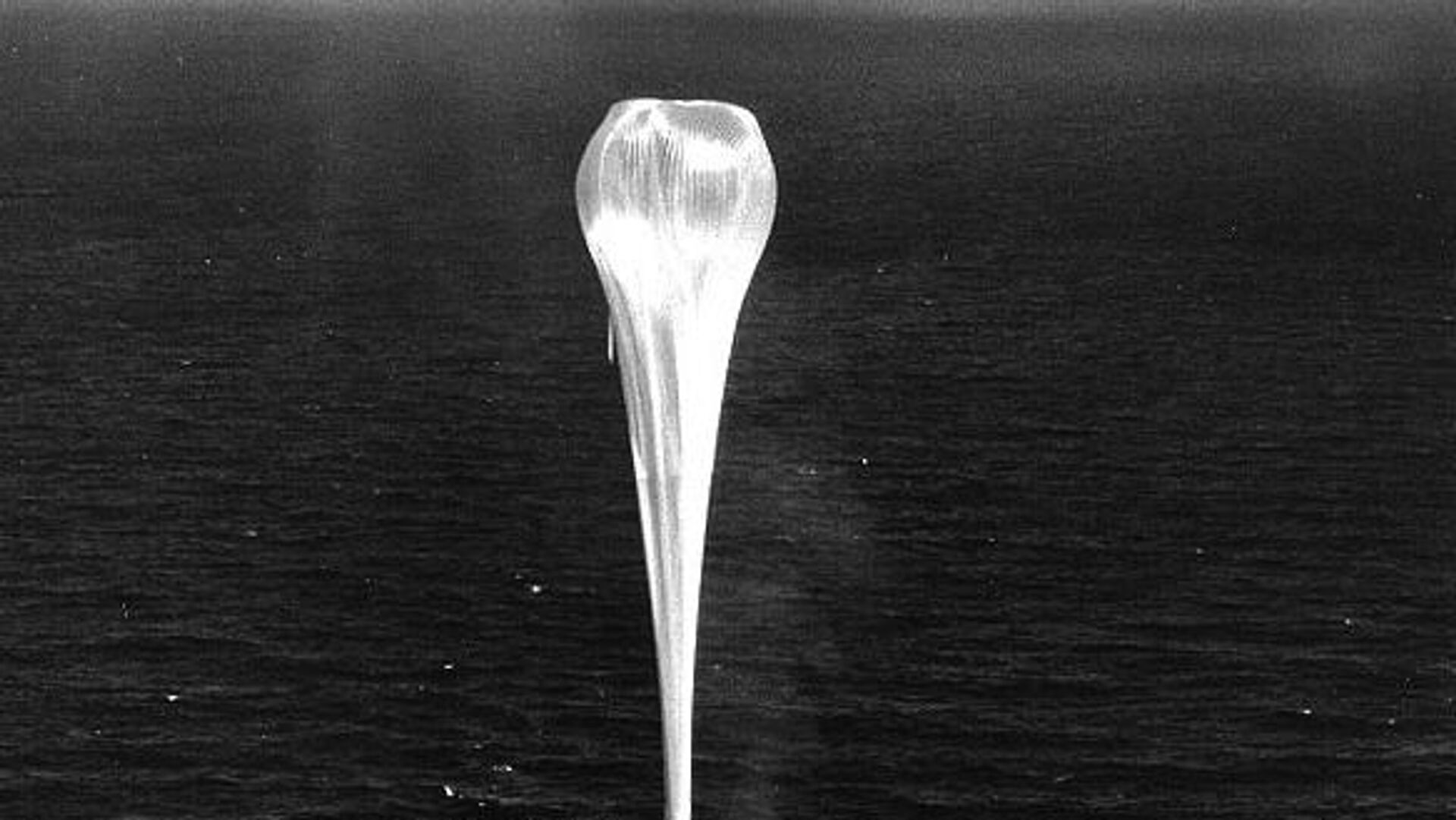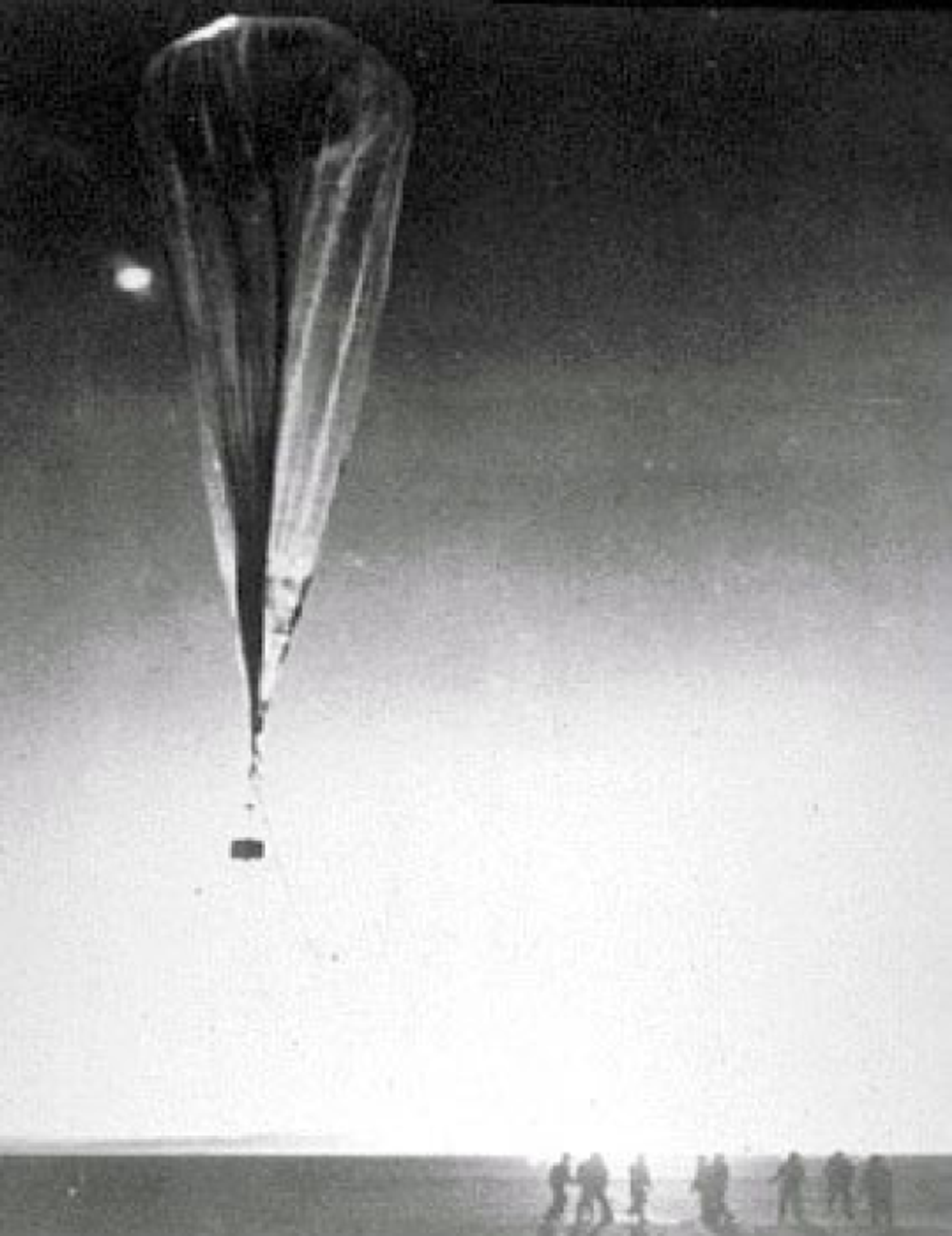https://sputnikglobe.com/20230209/us-spy-balloon-program-goes-back-70-years-included-flights-over-china-documents-reveal-1107280049.html
US Spy Balloon Program Goes Back 70 Years, Included Flights Over China, Documents Reveal
US Spy Balloon Program Goes Back 70 Years, Included Flights Over China, Documents Reveal
Sputnik International
Although the US has protested China’s alleged disguising of a spy balloon as a weather balloon, for decades the Pentagon did just that as part of a program dating to the 1950s that included flights over the People’s Republic of China (PRC).
2023-02-09T20:44+0000
2023-02-09T20:44+0000
2023-04-13T12:44+0000
sputnik explains
chinese balloon over us
high-altitude balloon
spy plane
pentagon
https://cdn1.img.sputnikglobe.com/img/07e7/02/09/1107281095_0:0:585:329_1920x0_80_0_0_064e04cf5b89d74f5416c3edb8ca5094.jpg
US officials have claimed the Chinese high-altitude balloon shot down off the US Atlantic coast last weekend carried communications-monitoring equipment and was part of a globe-spanning program to spy on other nations. Beijing has rejected the accusations, saying it was a civilian scientific balloon that researchers lost control over.The truth about the issue remains to be seen, since the Americans have provided no evidence to support their claims as of yet. However, there is a considerable volume of evidence showing that the Pentagon ran an identical program during the Cold War and has poured billions in recent years into new balloon projects.Project GenetrixOne program begun in the 1950s was called Project Genetrix, the details of which became public knowledge after the National Reconnaissance Office (NRO) published a book about the Pentagon’s aerial spycraft in 2012. The program was officially part of a global meteorological survey project called the International Geophysical Year, but in reality it aimed to collect a variety of information about communist countries, including nuclear weapons tests, as well as detailed photographs of millions of square miles of China and the Soviet Union.Between January 10 and February 6, 1956, Genetrix launched 516 high-altitude balloons from five launch sites in NATO countries: Gardermoen, Norway; Evanton, Scotland; Oberpfaffenhofen and Giebelstadt in the Federal Republic of Germany; and Incirlik, Turkiye. However, just 54 balloons were recovered and only 31 provided usable photographs.Many of the balloons were recovered by China and the USSR, and the special film they used, which was hardened against the high radiation and low temperatures encountered in the upper atmosphere, was later used in the Soviet space program to photograph the far side of the moon for the first time.‘Ownership of the Upper Air is a Disputable Question’However, the Soviets, with whom the US had relations at the time (the US did not recognize the PRC as the legitimate government of China until 1979), did not sit silently. They launched a public protest, which the media grilled US Secretary of State John Foster Dulles about on February 7, 1956.Dulles attempted to deflect, insisting the balloons were “weather balloons” that were “gathering an extraordinary amount of useful and new information about those jet stream air currents” and that they weren’t bothering anybody.He went on to argue that no nation had the right to complain about such flights if they didn’t interfere with the nation’s use of the air, which such high-altitude balloons would not do. While he admitted the balloons carried photographic equipment, he claimed the cameras were for photographing “cloud formations which are usually under the balloons.”Whether this was simple deflection after getting caught red-handed, or whether the US actually believed its spy balloon flights were not violating international law, is unclear.Replaced With U-2sThe day of the spy balloon was coming to an end, however, as the Cold War arms race produced higher-flying bombers and higher-flying fighter jets to intercept them. The U-2 Dragon Lady spy plane effectively displaced the balloons and began their own flights over other nations. Surface-to-air missiles improved, too, and by the early 1960s were able to reach high enough to shoot down U-2s over the Soviet Union, Cuba, and China, the latter of which downed five U-2s before 1973, when the flights stopped as part of the talks that led to Washington and Beijing normalizing relations.The quest to find a newer, faster, higher-flying spy plane that could survive such missions led to Project OXCART and ultimately the SR-71 Blackbird, which could blast across the frontier at nearly 100,000 feet up and at three times the speed of sound.21st Century Spy BlimpsHowever, the US wasn’t done with using high-altitude balloons for surveillance. Stratospheric balloons have retained their utility into the 21st century, being able to hover over a location for longer than a satellite and with the benefit of being able to take more measurements than a satellite can.The US Army also poured nearly $2.7 billion into the Joint Land Attack Cruise Missile Defense Elevated Netted Sensor (JLENS) program, which also used tethered aerostats carrying radars and other equipment up to 10,000 feet up. The program was canceled in 2017 after one of the aerostats broke loose from its tether at a US military base and drifted across several US states, its tether dragging behind it tearing down electrical wires.More recently, the Covert Long-Dwell Stratospheric Architecture (COLD STAR) program has gotten roughly $30 million pumped into it in recent years, including $27 million set aside for the 2023 fiscal year. That program, which would see balloons hovering at between 60,000 to 90,000 feet, is intended to serve as early warning against Chinese and Russian hypersonic missiles, but could also do a whole lot more.Noting that the Pentagon was looking at incorporating the balloons into the “kill chain” used during an offensive operation, Karako said the balloons “can be trucks for any number of platforms, whether it be communication and data link nodes, ISR [intelligence, surveillance, and reconnaissance], tracking air and missile threats, or even various weapons - and without the predictable orbits of satellites.”Another program on the 2023 National Defense Authorization Act under the Classified Programs section was simply labeled “High Altitude Balloon,” and was given $10 million.
https://sputnikglobe.com/20230207/pentagon-report-noted-chinese-balloon-circumnavigating-globe-during-trump-admin-us-media-says-1107052897.html
Sputnik International
feedback@sputniknews.com
+74956456601
MIA „Rosiya Segodnya“
2023
News
en_EN
Sputnik International
feedback@sputniknews.com
+74956456601
MIA „Rosiya Segodnya“
Sputnik International
feedback@sputniknews.com
+74956456601
MIA „Rosiya Segodnya“
us spy balloon, china, weather balloon, pentagon
us spy balloon, china, weather balloon, pentagon
US Spy Balloon Program Goes Back 70 Years, Included Flights Over China, Documents Reveal
20:44 GMT 09.02.2023 (Updated: 12:44 GMT 13.04.2023) Longread
Although the US has protested China’s alleged disguising of a spy balloon as a weather balloon, for decades the Pentagon did just that as part of a program dating to the 1950s that included flights over the People’s Republic of China (PRC).
US officials have claimed the Chinese high-altitude balloon shot down off the US Atlantic coast last weekend carried communications-monitoring equipment and was
part of a globe-spanning program to spy on other nations. Beijing has rejected the accusations, saying it was a civilian scientific balloon that researchers lost control over.
The truth about the issue remains to be seen, since the Americans have provided no evidence to support their claims as of yet. However, there is a considerable volume of evidence showing that the Pentagon ran an identical program during the Cold War and has poured billions in recent years into new balloon projects.
One program begun in the 1950s was called Project Genetrix, the details of which became public knowledge after the National Reconnaissance Office (NRO)
published a book about the Pentagon’s aerial spycraft in 2012.
The program was officially part of a global meteorological survey project called the International Geophysical Year, but in reality it aimed to collect a variety of information about communist countries, including nuclear weapons tests, as well as detailed photographs of millions of square miles of China and the Soviet Union.
The balloons were roughly 200 feet tall when fully inflated and they floated at between 60,000 and 100,000 feet up - roughly the same characteristics of the Chinese balloon downed on Saturday. At the time, this was far above the reach of interceptor aircraft, and surface-to-air missiles had not yet been developed, meaning the balloons were fairly safe from enemy harassment. However, Soviet pilots reportedly learned to engage them at dawn, when they floated to a lower altitude due to cooling air, leading to many of the balloons being shot down.
Between January 10 and February 6, 1956, Genetrix launched 516 high-altitude balloons from five launch sites in NATO countries: Gardermoen, Norway; Evanton, Scotland; Oberpfaffenhofen and Giebelstadt in the Federal Republic of Germany; and Incirlik, Turkiye. However, just 54 balloons were recovered and only 31 provided usable photographs.
Many of the balloons were recovered by China and the USSR, and the special film they used, which was hardened against the high radiation and low temperatures encountered in the upper atmosphere,
was later used in the Soviet space program to photograph the far side of the moon for the first time.
‘Ownership of the Upper Air is a Disputable Question’
However, the Soviets, with whom the US had relations at the time (the US did not recognize the PRC as the legitimate government of China until 1979), did not sit silently. They launched a public protest, which
the media grilled US Secretary of State John Foster Dulles about on February 7, 1956.
Dulles attempted to deflect, insisting the balloons were “weather balloons” that were “gathering an extraordinary amount of useful and new information about those jet stream air currents” and that they weren’t bothering anybody.
“The question of the ownership of the upper air is a disputable question and also of the ether above the air,” Dulles said. “The legal position is quite obscure … what the legal position is, I wouldn’t feel in a position to answer, because I do not believe that the legal position has been codified, you might say.”
He went on to argue that no nation had the right to complain about such flights if they didn’t interfere with the nation’s use of the air, which such high-altitude balloons would not do. While he admitted the balloons carried photographic equipment, he claimed the cameras were for photographing “cloud formations which are usually under the balloons.”
Whether this was simple deflection after getting caught red-handed, or whether the US actually believed its spy balloon flights were not violating international law, is unclear.
The day of the spy balloon was coming to an end, however, as the Cold War arms race produced higher-flying bombers and higher-flying fighter jets to intercept them. The U-2 Dragon Lady spy plane effectively displaced the balloons and began their own flights over other nations. Surface-to-air missiles improved, too, and by the early 1960s were able to reach high enough to shoot down U-2s over the Soviet Union, Cuba, and China, the latter of which
downed five U-2s before 1973, when the flights stopped as part of the talks that led to Washington and Beijing normalizing relations.

7 February 2023, 18:58 GMT
Ironically, when the Soviets shot down U-2 pilot Francis Gary Powers in 1960, US President Dwight D. Eisenhower, who didn’t know Powers had survived the crash, initially claimed in the press that a weather plane had gone missing over Turkiye. However, Powers survived, and Soviet Premier Nikita Khrushchev used the situation to thoroughly embarrass the Americans.
The quest to find a newer, faster, higher-flying spy plane that could survive such missions led to Project OXCART and ultimately the
SR-71 Blackbird, which could blast across the frontier at nearly 100,000 feet up and at three times the speed of sound.
However, the US wasn’t done with using high-altitude balloons for surveillance. Stratospheric balloons have retained their utility into the 21st century, being able to hover over a location for longer than a satellite and with the benefit of being able to take more measurements than a satellite can.
During the US wars in Iraq and Afghanistan, the US Army
used large aerostats tethered to the ground to conduct reconnaissance and for early warning near bases. However, those balloons rarely ventured above several thousand feet of altitude.
The US Army also poured nearly $2.7 billion into the Joint Land Attack Cruise Missile Defense Elevated Netted Sensor
(JLENS) program, which also used tethered aerostats carrying radars and other equipment up to 10,000 feet up. The program was canceled in 2017 after one of the aerostats broke loose from its tether at a US military base and drifted across several US states, its tether dragging behind it tearing down electrical wires.
More recently, the Covert Long-Dwell Stratospheric Architecture
(COLD STAR) program has gotten roughly $30 million pumped into it in recent years, including $27 million set aside for the 2023 fiscal year. That program, which would see balloons hovering at between 60,000 to 90,000 feet, is intended to serve as early warning against Chinese and Russian hypersonic missiles, but could also do a whole lot more.
“High or very high-altitude platforms have a lot of benefit for their endurance on station, maneuverability and also flexibility for multiple payloads,” said Tom Karako, senior fellow for the International Security Program and Missile Defense Project director at the Center for Strategic and International Studies (CSIS), told US media in July 2022.
Noting that the Pentagon was looking at incorporating the balloons into the “kill chain” used during an offensive operation, Karako said the balloons “can be trucks for any number of platforms, whether it be communication and data link nodes, ISR [intelligence, surveillance, and reconnaissance], tracking air and missile threats, or even various weapons - and without the predictable orbits of satellites.”
One
think piece published by the conservative, Washington, DC-based Hudson Institute in April 2022 laid out in detail how this might unfold, with stratospheric balloons serving as “quasi-satellites” during combat ops.
Another program on the 2023 National Defense Authorization Act under the
Classified Programs section was simply labeled “High Altitude Balloon,” and was given $10 million.







